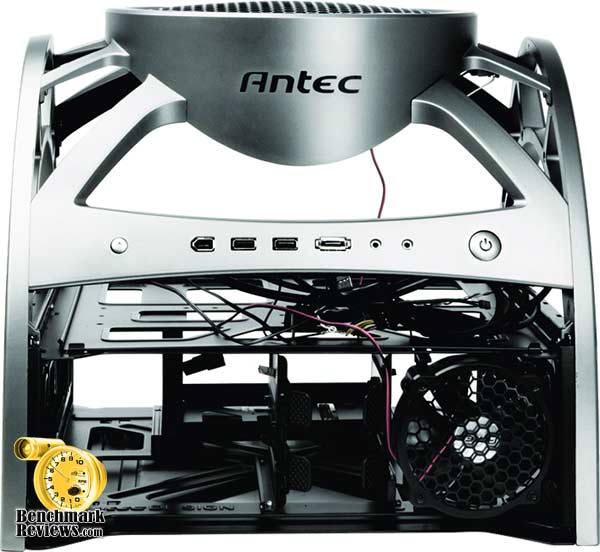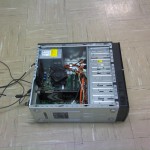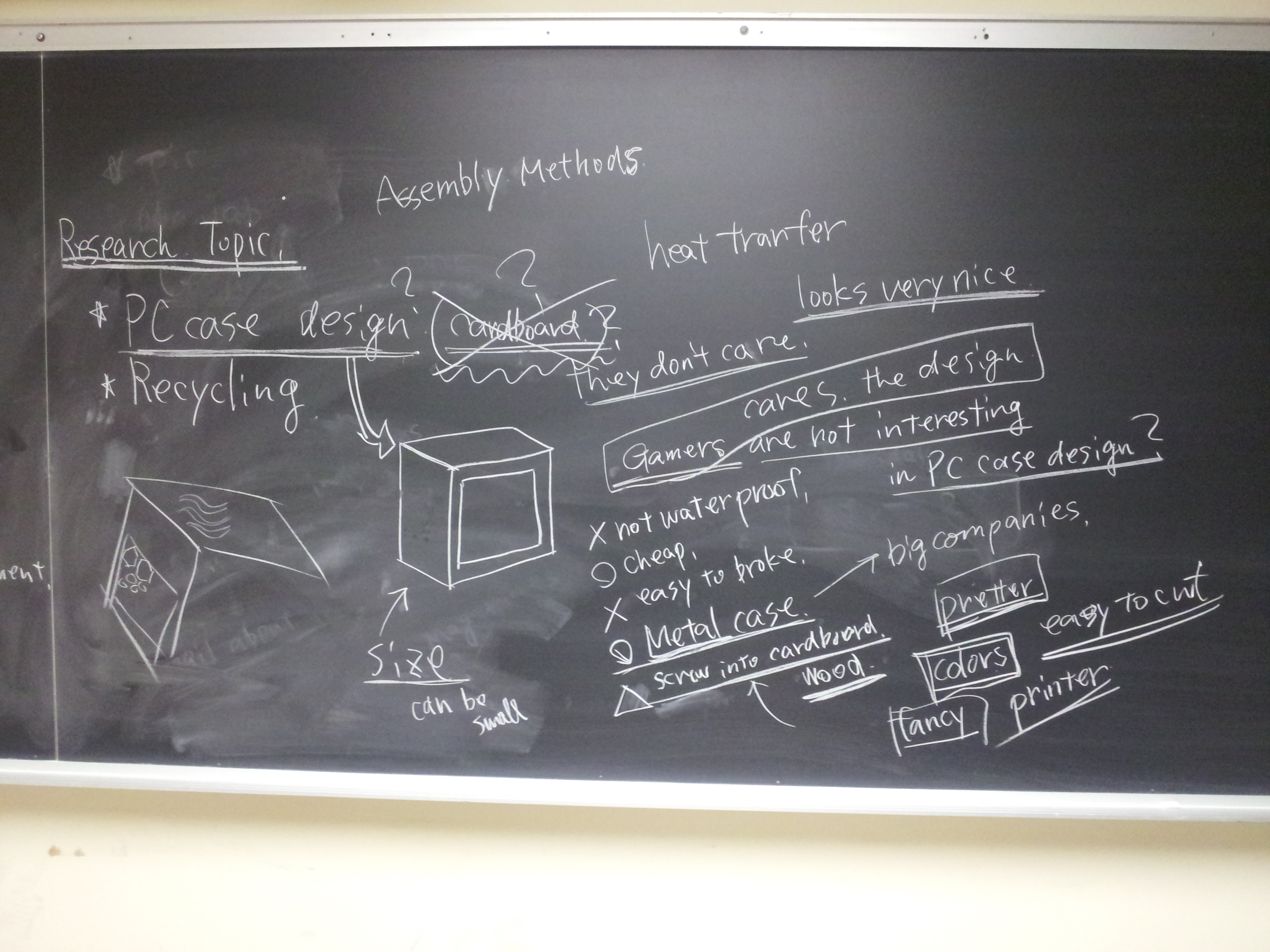

>Steel
Strongest per thickness, usually cheapest. May rust
eventually.
>Aluminum
Lighter weight, needs to be thicker than steel for same
rigidity else more folds and bends or braces to make the
case stronger and quieter.
>Acrylic
No EMI prevention, more fiddly to use longer screws if it
isn’t designed for short standard drive screws. If it’s
transparent it looks uglier after dust builds up so a
positive pressurized design with a filtered intake is a good
attempt at combatting that. More susceptible to cracking if
it’s moved. More variability between different cases than
with steel. More expensive if decent quality thicker
acrylic, but a little quieter than metal.
>Plastic
Not a good choice, who makes all plastic cases?
>
>Other materials available for DIY projects, like Wood.
Looks good if you start with good wood and a good design.
Quieter than metal. Not much else going for it unless you
wanted a hobby building a case and had some nice wood lying
around or just found wood easier to work with to make a
custom shaped case you can’t find already made out of other
materials.
In general, steel cases are the most popular because they
are the most suited to a typical system.
>
>First, what should we look for:
>Heat dissipation or thermal isolation?
Forget about heat dissipation, it is entirely due to the
intake and exhaust design which doesn’t need to be done any
differently with any of the above materials.
Thermal isolation from what? There is no intent to
thermally isolate a case or it’s contents, except maybe
adding a duct to channel airflow but even this isn’t really
necessary unless the cooling design depends on a rear case
fan to pull air through a heatsink instead of having a fan
on that heatsink, or on the intake to flow air over a
forward situated CPU like on some BTW or server boards.
>
>Then, what do we want from it:
>In general I think sound isolation and low components temperature,
>some people would like a “lightweight” case.
Lightweight seems the least important unless you’re
regularly attending lan parties.
Sound isolation can be important, but the general design of
any of the above materials can inclue ample intake and
exhaust area such that very low RPM fans are used, as well
as quiet northbridge and video card fans (if so equipped).
IOW the best sound isolation strategy is for the sound to be
less in the first place, then not have a front case fan
because that noise is immediately escaping the case towards
the user’s ears instead of being reflected off the back wall
or rest of the room away from the ears before it returns,
with some of the noise absorbed or scattered in different
directions before reflected back.
Very rigid thin materials without folds or creases tend to
act like a drum from vibrations in the system, meaning a
metal case tends to be louder, especially the cheap ones but
this can be minimized through choice of a good design and
fans as mentioned above. Key is deciding just how quiet it
needs to be, it is not hard to build an average system in a
metal case that is quiet, but with a lot of hotter running
parts the wood then acrylic would be quieter if all else
were equal.
>
>I think Aluminum would give best heat dissipation, but Acrylic would
>give better sound isolation.
Aluminum has no advantage in heat dissipation because parts
aren’t heatsunk to the case to any significant extent and
the case air temperature is too similar to the room air
temperature for this to matter. Air just doesn’t stay in
the case long enough if it has proper ventilation.
Buy the case with the looks you like and good intake and
exhaust designs. Use the right fans or switch fans if
necessary. These things matter far more than the material
Strongest per thickness, usually cheapest. May rust
eventually.
>Aluminum
Lighter weight, needs to be thicker than steel for same
rigidity else more folds and bends or braces to make the
case stronger and quieter.
>Acrylic
No EMI prevention, more fiddly to use longer screws if it
isn’t designed for short standard drive screws. If it’s
transparent it looks uglier after dust builds up so a
positive pressurized design with a filtered intake is a good
attempt at combatting that. More susceptible to cracking if
it’s moved. More variability between different cases than
with steel. More expensive if decent quality thicker
acrylic, but a little quieter than metal.
>Plastic
Not a good choice, who makes all plastic cases?
>
>Other materials available for DIY projects, like Wood.
Looks good if you start with good wood and a good design.
Quieter than metal. Not much else going for it unless you
wanted a hobby building a case and had some nice wood lying
around or just found wood easier to work with to make a
custom shaped case you can’t find already made out of other
materials.
In general, steel cases are the most popular because they
are the most suited to a typical system.
>
>First, what should we look for:
>Heat dissipation or thermal isolation?
Forget about heat dissipation, it is entirely due to the
intake and exhaust design which doesn’t need to be done any
differently with any of the above materials.
Thermal isolation from what? There is no intent to
thermally isolate a case or it’s contents, except maybe
adding a duct to channel airflow but even this isn’t really
necessary unless the cooling design depends on a rear case
fan to pull air through a heatsink instead of having a fan
on that heatsink, or on the intake to flow air over a
forward situated CPU like on some BTW or server boards.
>
>Then, what do we want from it:
>In general I think sound isolation and low components temperature,
>some people would like a “lightweight” case.
Lightweight seems the least important unless you’re
regularly attending lan parties.
Sound isolation can be important, but the general design of
any of the above materials can inclue ample intake and
exhaust area such that very low RPM fans are used, as well
as quiet northbridge and video card fans (if so equipped).
IOW the best sound isolation strategy is for the sound to be
less in the first place, then not have a front case fan
because that noise is immediately escaping the case towards
the user’s ears instead of being reflected off the back wall
or rest of the room away from the ears before it returns,
with some of the noise absorbed or scattered in different
directions before reflected back.
Very rigid thin materials without folds or creases tend to
act like a drum from vibrations in the system, meaning a
metal case tends to be louder, especially the cheap ones but
this can be minimized through choice of a good design and
fans as mentioned above. Key is deciding just how quiet it
needs to be, it is not hard to build an average system in a
metal case that is quiet, but with a lot of hotter running
parts the wood then acrylic would be quieter if all else
were equal.
>
>I think Aluminum would give best heat dissipation, but Acrylic would
>give better sound isolation.
Aluminum has no advantage in heat dissipation because parts
aren’t heatsunk to the case to any significant extent and
the case air temperature is too similar to the room air
temperature for this to matter. Air just doesn’t stay in
the case long enough if it has proper ventilation.
Buy the case with the looks you like and good intake and
exhaust designs. Use the right fans or switch fans if
necessary. These things matter far more than the material
used.









